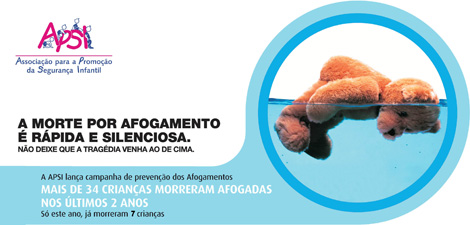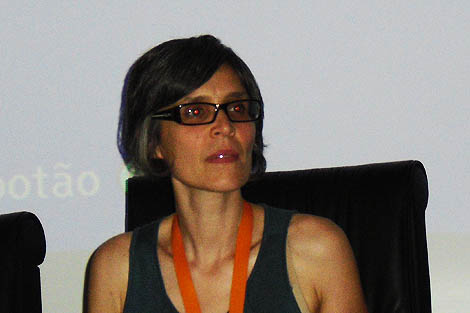 Child safety has increased a lot in Portugal over the last two decades, but there is still a lot to be done, particularly with regard to accidents in water and deaths from drowning.
Child safety has increased a lot in Portugal over the last two decades, but there is still a lot to be done, particularly with regard to accidents in water and deaths from drowning.
The Association for the Promotion of Child Safety (APSI) celebrated its 20th anniversary this Wednesday with the conference «Security in Water – what has changed in Portugal», which took place in Faro and took the opportunity to take stock of the evolution of child safety in Portugal.
According to the president of APSI Sandra Nascimento, a lot has already changed in Portugal, but the effort still has to be continued and, above all, to structure it. It is urgent to implement measures at the national level, which "are already identified" in an international report on child safety in Portugal.
The result of the analysis carried out by the European Child Safety Alliance (AESI) on our country, on which the Child Safety Action Plan of which APSI was the technical coordinator, was also based, served as a framework for yesterday's conference.
 In it, it is very clear that Portugal is at a good level in areas such as Road Safety and Child Health, but still has a performance below the desired level in terms of water safety. Even so, Portugal was, “for the first time, above the European average, with regard to the mortality rate”.
In it, it is very clear that Portugal is at a good level in areas such as Road Safety and Child Health, but still has a performance below the desired level in terms of water safety. Even so, Portugal was, “for the first time, above the European average, with regard to the mortality rate”.
«In general terms, Portugal really surprised in the last evaluation report of AESI, released in June of this year, by the reduction of mortality. When we evaluate 20 years of work [at APSI], we see that there is a constant and consistent reduction in the number of deaths of children and adolescents and also in the number of hospitalizations», revealed, in the margins of the session, Sandra Nascimento.
"In terms of numbers, in 1994 there were 551 children and young people who died as a result of an accident and in 2010 there were 90. It is clear that if we think that 80 percent of accidents are preventable, this number is still very high", he said. .
To reduce this value, additional measures must be taken, especially with regard to water safety. Accidents with younger children almost always happen in swimming pools, irrigation tanks or built environments, while young children tend to have accidents in rivers, lakes or reservoirs, which are almost always unattended.
APSI has long fought for the passage of a law that would impose rules on private pool owners. “There is a huge gap in terms of legislation for swimming pools, which worries us a lot. Of young children, a good percentage die in these environments and there is no legislation at all”, he illustrated.
At issue are factors such as “the design of the tank itself, depth marks, accesses, signs, means of assistance and physical barriers”. "It's all uncovered and it's up to everyone," he summed up, adding that in this type of situation, "it can't be common sense to prevail."
This is an old demand of APSI, which may have concrete developments this year. According to the spokesman of the Institute for Relief to Castaways, Commander Nuno Leitão, one of the speakers at the conference, "a decree of law regulating safety in water diversion tanks is about to be approved." "We hope that the law is published by the end of the year," he said.
Nuno Leitão stressed that “it has been very complicated to assemble this decree-law”, since there are many interests and entities involved. "Unfortunately, it is in Health, because if it had been in Defense, it would have taken another path," he said.
The ISN spokesperson took the opportunity to recall the good work that the institute has been developing in the areas under its jurisdiction, which made Portugal, in 2011, «the country in the world with the lowest rate of deaths from drowning on the beaches».

















Comments